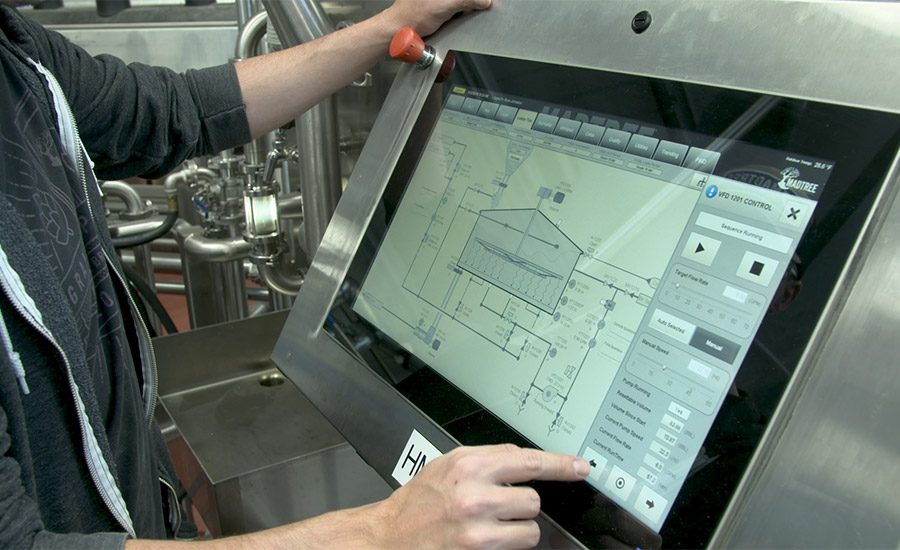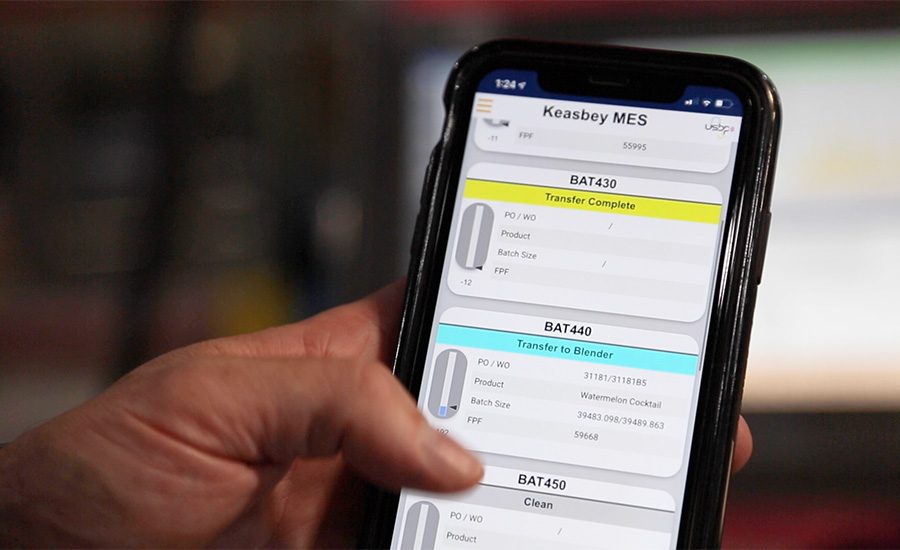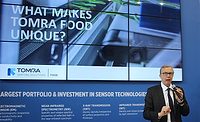Have you ever upgraded a software application, and afterwards felt like you never saw the software before? Supposedly, the user interface was revamped to “make it more intuitive.” What if you’re not intuitive? Fortunately, this doesn’t seem to be the problem that it used to be, and maybe part of the reason is that today’s programming tools let developers incrementally update functionality without reinventing the wheel. At least industrial application software developers realize that no one wants to go back and relearn everything. After all, we are creatures of habit.
Minimizing the re-learning experience after an upgrade
I asked the experts how their companies keep the learning curve low so users don’t have to relearn everything after a major version upgrade, for example, from Version 3.0 to 4.0. I also asked how they decide what controls no longer need to be “front and center.” For those applications that use speed keys to access certain functionality, to have them changed or removed altogether can be a frustrating experience, so I asked how they handle this type of situation? Imagine my chagrin when an application I used for several years removed the Ctrl-M speed key to access a context-sensitive dialog box to modify an object’s properties, and changed it to being only available by highlighting with a mouse and right clicking the mouse to access the same box. This is progress?
ADISRA values the trusted and long-term relationships it has with its customers, says Leandro Coeli, EVP of consulting services. “We are focused on our customer’s success. That is why we maintain 100% compatibility between releases. Applications built with earlier ADISRA SmartView versions will work on the latest ADISRA SmartView version.”
Context-related boxes today make life easier for system developers, but keeping them short and relevant so they don’t run off your screen is a big help. Nobody needs a dialog box with three-dozen options—of which 20 are greyed out because they don’t apply.
Coeli says that ADISRA SmartView uses a methodology to assist designers with building applications by only showing the available functionality within each particular development environment area while constructing the application. For example, if you are developing a screen and you click on an object, only the properties that work with that object will appear in a pop-up. The same is true for configuring a driver—only the information you need for that particular protocol will appear. This methodology is used for all features within the development environment, increasing usability while decreasing development time.
For areas in ADISRA SmartView where speed keys are used, the speed keys are kept consistent between releases and follow Microsoft products such as the use of Ctrl/C to copy and Ctrl/V for paste.
Ever update an application and go to use a specific feature—and it’s gone? Yup, been there, done that. VERY frustrating!
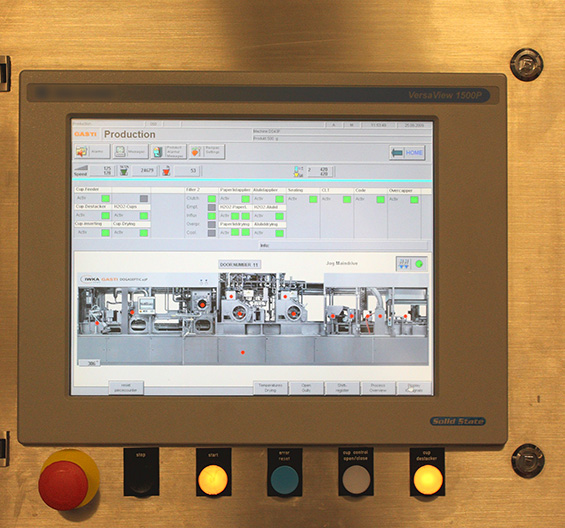
No one wants surprises on important production equipment because a software update either failed outright or because controls were moved around or hidden, causing operators to have to relearn a particular HMI. Photo courtesy Wayne Labs
“Features are added to an Emerson software release over release, not removed,” says Rich Carpenter, general manager for product management for Emerson’s machine automation software business. “Emerson emphasizes the ability to migrate existing end user applications forward, as we know much of the cost of the system is in developing the end application. Emerson also bears in mind concerns with ‘feature bloat’—which happens as some systems mature and new capabilities are added. For this reason, the Movicon products are very modular, and we can add significant new capabilities as options separately available versus a giant monolith application of increasing complexity.”
To make life easier, Emerson provides examples, and to me that’s nice to have. “Products are released with a series of demo applications spanning many industries that specifically show what is possible with the product,” adds Carpenter. These are regularly updated as new capabilities are released. In addition, there are demo projects specifically released to showcase new features which help users with examples they can easily follow.
A careful balance between old and new
“We try to find a balance between usability and implementing innovative new features,” says Shay Johnson, Inductive Automation sales engineer. “In general, our upgrades are backwards-compatible and tend to be iterative and incremental. Ignition uses a unified design environment, allowing new features to be integrated into a familiar UI rather than deployed as new applications. With major releases, we create upgrade guides that are accessible through our online documentation, and we outline key changes for users. Sales engineering is also available to meet with customers before upgrades to provide advice to their specific needs.”
“In any new version upgrade, ICONICS typically introduces a set of carefully procured new features that are designed to address new needs in the market, improvements or ease-of-use features our customers and partners had thoughtfully suggested, or specific capabilities with existing clients in mind,” says Jotham Kildea, solutions sales engineering supervisor.
“We incorporate relevant information about these new capabilities into our training courses and materials so that our integrator partners and clients can quickly get up to speed on these advances, often conducting sneak preview webcasts to our trusted partners for feedback prior to release,” adds Kildea. The “What’s New” publication is a go-to reference guide included with each release, specifically intended for anyone looking to understand the enhancements and new features contained within that new version.
What about backward compatibility? “ICONICS strives to maintain backward compatibility to the greatest extent possible, and user settings are preserved and carried forward as part of the upgrade process (if upgrading on the same hardware),” says Kildea. For those moving to a different system or virtual machine, user-defined settings can be backed up and restored as part of the project deployment process within ICONICS’ centralized Workbench configuration tool.
Better communications mean better connectivity
|
I asked the developers what tools make it easier to connect supervisory control computers to PLCs, PACs, robot controllers and data acquisition systems—and the common thread is OPC UA.
While this may seem like a commercial for the OPC Foundation (founded in 1996), there is nothing like a set of standards for software and hardware developers to use to establish consistent communications among pieces of industrial equipment. While Windows has adopted TCP/IP and SMB 3.1 in Windows 10 for its networking protocols, OPC UA is the glue protocol pulling together industrial devices and software—and has been recognized by Microsoft since the inception of OLE (formerly known as object linking and embedding). OPC was known early on as OLE for Process Control—and is now just OPC with the UA standing for “Unified Architecture.” Put very simply, OPC “DA” stands for Data Access, and is a method of providing real-time data from industrial devices at the driver level.
So, most software suppliers today offer backward compatible support for legacy drivers, but there is a definite trend in moving to standard protocols like OPC.
ADISRA SmartView offers protocol drivers for various equipment, and a driver’ worksheet is easy to configure because only the information required for that protocol is presented to the user, says Coeli.
OPC UA and OPC DA protocols drivers are offered in ADISRA SmartView. For OPC UA, ADISRA SmartView offers both a client as well as a server protocol driver. The OPC UA server would be used, for example, if you were communicating to an external software that has an OPC client. Additionally, ADISRA SmartView has an open API available for companies who want to develop their own communications driver, says Coeli.
“Unlike other products in the industrial automation software space, Emerson maintains our own set of device protocol drivers natively as part of the Movicon products,” says Carpenter. They can be packaged in a module like Connext for applications that just need the connectivity, or delivered as part of the full Movicon.NExT product solution. Emerson takes the native protocols through a device-dependent to device-independent transition so applications only need to deal with the format of their choice.
In most OT applications, OPC UA is the preferred interface. In many IT applications, MQTT is the preferred interface. For more analytic-oriented applications, the data is often brought to a database either locally or in the cloud where it is easily accessed for development models or other analytics, adds Carpenter.
“Ignition can easily act as a data hub,” says Inductive Automation’s Johnson. There are built-in drivers for a variety of common devices such as Allen-Bradley, Siemens, Omron, and more. It can act as an OPC UA server and as an OPC UA client. The software also has modules for publishing and subscribing to MQTT data. Having adopted these open standards, we can connect to nearly any device, log history to a database, share data with other systems, and display it on dashboards, HMIs, and more.
“OPC UA has been an excellent standard protocol for ICONICS to leverage over the years and one with ever-broadening industry adoption,” says Kildea. “For devices which support OPC UA natively, the conversation on connectivity is quite brief, but for devices that are not there yet, we will typically leverage an OPC Server as a protocol intermediary. Most commonly, we leverage the Takebishi DeviceXPlorer OPC Server, as it includes a broad spectrum of device interfaces that are most commonly used on customer applications.”
“Additionally,” says Kildea, “ICONICS’ 2018 acquisition by Mitsubishi Electric Corporation has brought about a new tighter relationship that has been a boon to us in allowing for rapid development of excellent integrations to the native Mitsubishi Electric Factory Automation device protocols which aids us in a wide variety of applications.”
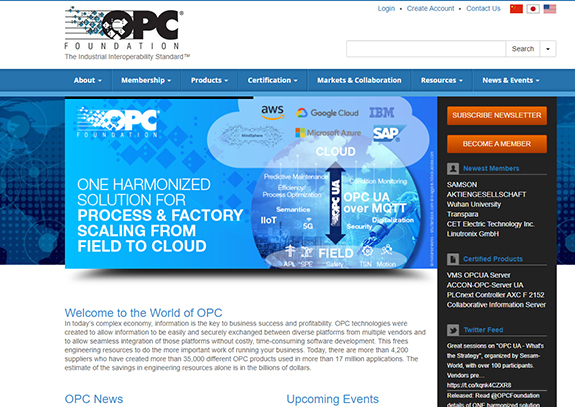
The OPC Foundation’s website is all things OPC for programmers, network engineers, hardware developers—and end users. OPC UA and OPC DA provide standardized protocols for industrial software to communicate: from machine to machine to HMI and to the cloud and back. Screen: 2 Feb 2022, Wayne Labs.
Changing work styles call for changing interfaces
When distributed control systems were the norm some years ago with “home run” cables bringing signals to and from remote machinery, operators huddled around multiple screens in a central control room. Today, Ethernet (wired and fiberoptic) and wireless networking systems plus cellular networks have created a truly distributed control system where operators can work from most anywhere. New technologies are indeed changing the way we work. As the late Marshall McLuhan, noted professor from the University of Toronto once said, “We shape our tools, and thereafter our tools shape us,” we see job roles changing as our controls have given us freer reign of a manufacturing site and new visions into process and equipment.
“It is important to understand the changing nature of how people work,” says Emerson’s Carpenter. In many plants, the central control rooms are largely empty. Roles are blended, with plant personnel sometimes doing operational tasks and sometimes doing maintenance tasks. They are more likely to be out in the plant than to be sitting behind a monitor at a desk or operator console. For this reason, mobility is a key element of how people work. Their cell phones, tablets, or other devices are carried with them and frequently checked throughout the day. They expect to be alerted when there is a problem versus having to discover it by looking at a screen. They want to be able to login to any monitor in the plant to get more details, regardless of whether the vendor software is physically deployed to that device.
For these reasons, operating on standard browsers is quite important. In many cases the people are remote, could be at home or at some other location when they need to check the system. Therefore, it is critical for modern software applications to follow this change in work habits, says Carpenter.
“In many ways, ICONICS finds that the ‘interface’ to data in manufacturing systems has grown beyond the traditional touch panel GUI,” says Kildea. “Our projects increasingly will ask us for non-traditional interfaces such as ‘Can I also set it up so that my engineers get a text message when this machine goes down?’ When they get that message, can they also have some sort of interface directly on their phone to see their data, so they can be informed of the problem before they get to the machine…or ‘I have a lot of newer employees to train up, but my experienced engineers cannot always be there to look over their shoulders. How do I enable them to communicate to solve problems collectively?’ These requests are indicative of the types of issues we are solving in many of today’s applications, and where we have focused our growth to extend the traditional HMI application in new ways and for new purposes.”
Looking forward a little further, the use of augmented reality (AR) techniques will continue to expand, says Carpenter. Today, this is often with the “lead users” who are experimenting with new ways to work, but at some point will be more mainstream. This type of AR does not need to be a fully immersive experience like a video game. It will be much more naturally integrated into the day-to-day working environment. For example, turning the video of the phone or tablet on, pointing at a piece of equipment in the plant, and having the system recognize the equipment and overlay critical KPIs directly onto the video. No need to walk through menus to get to the right device and select the appropriate dashboards to understand how the equipment is performing. This technology will be more mainstream as it matures, and companies continue to augment how people work and interact with the systems, says Carpenter.
System designers will have to think differently to adapt to these new interface applications. “Regarding HMI usability, there are many design issues that should be considered,” says ADISRA’s Coeli. Screen size will dictate how intricate an application can be and how much information can be viewed on the screen. Color and the amount of information available on screen with the HMI design is a designer’s major usability and productivity consideration.
There is some interest in situational awareness, which is also known as high-performance HMI, adds Coeli. Good situational awareness design calls for presenting users with highly-contextualized information that is quickly and easily interpreted so they can make real-time informed decisions, thereby increasing productivity. The HMI application’s navigational design can also affect usability and productivity and must be considered when designing an application for a particular device or process.
Many companies have set standards for these issues and more, to promote consistency, simplified training, and ease-of-use among their employees. These tools are important enough to be considered along with the controls and communications capabilities of any software you’re considering to purchase.
